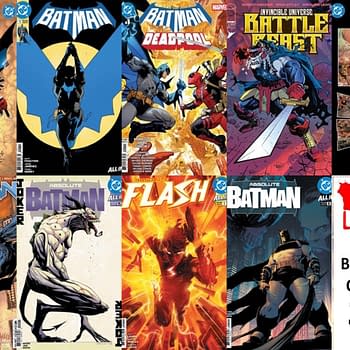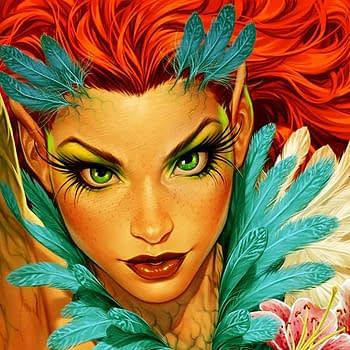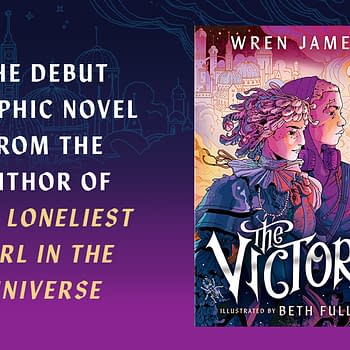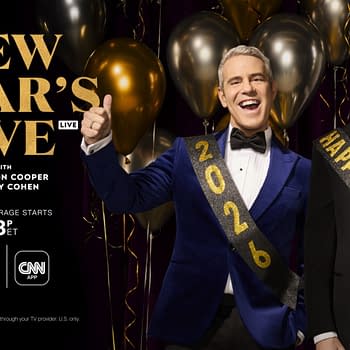Posted in: Batman, Comics, Comics Publishers, DC Comics | Tagged: Batman, dan didio, dc comics, frank miller
Dan DiDio's Rule For DC Was Only A Third Of Comics Should Be Batman
Dan DiDio talks a lot about the plans and process at new publisher Frank Miller Presents. But he also talked a lot about being co-publisher at DC Comics.
Talking to Zach Rabiroff at the Comics Journal, Dan DiDio talked a lot about the plans and process at new publisher Frank Miller Presents. But he also talked a lot about being co-publisher at DC Comics. And he probably knows what will get the Bleeding Cool headline.
Dan DiDio states "I think they might actually be at the final tipping point now. Because the word I hear is that books are approved with variant covers [in mind] – it's not even variant covers as an accelerant for sales, it's now part of the equation for the profitability of a product, which means that's a really dangerous trap. So that's why if I strip our books down to no variants, at least I know what my bottom line is. I know the bottom of my audience, what my true readership is. And it's a lot easier to plan when you understand what you're really working for, rather than what you're sort of pretend-selling for the moment, you know? And all the people that are building on variants, their answer now is to add more covers, which is the complete opposite direction. The ship's upside-down: you don't go to the top, because the top's underwater."
Dan DiDio also talked about increasing sales to a decreasing audience. "I believe we lost one to two generations of comic fans. What do I mean by that? I mean that whatever we were doing at the moment wasn't attractive to people looking for something to buy some sort of entertainment. And I think that's when you saw this gravitation to manga. And rather than understand what that audience was going, we doubled down on the audience that we had. I used to joke–which is not a joke anymore–when I first got to DC about sales on a number of books and price increases. And the simple math was that a book at $2.99 selling 40,000 copies turned the same profit that a book at $7.99 did at 25,000, and a $15 did at 10,000. But the 10,000 book had a hardcover, you had beautiful paper, it didn't [have to hit a] schedule. Everybody said, "Let's make more of those." And I said, "Here's the problem. I make more of those 10,000, I lose 5,000 people. Like, 40,000 [readers] goes to 35, 25 goes to 20, 10 goes to 5. We're out of business." And the answer becomes, "Well, we just raise the price." And I said, "Great. We're going to create a $1,000 comic for 1,000 people. And that'll be our entire audience at the end of the day." And I think that's where we're heading right now."
Dan DiDio identifies the industry issues down to two factors. "Ultimately–I'm going to get myself in trouble–we're lazy or scared. It's either one. Lazy, meaning I've got this built-in, easy access to an audience that pretty much buys anything no matter how much they complain. So therefore we can just create for them, and sort of sit back and relax. Scared is: I'm afraid to try anything new because I don't know what's out there [in terms of an audience]. Maybe there isn't anything out there, and if it doesn't work, we're done."
And Dan DiDio looks to DC Comics' past, when they had a much greater range of comics than mostly superheroes. "As the story is told, popular, successful books on the newsstand that were profitable were being canceled to free up resources to create maybe not as profitable, but more focused books for the direct market, which were superhero-based. And we narrow ourselves, and we've created this very tight little box, and it was fed by fandom. Fandom owning stores, and basically only buying what they wanted as the gatekeepers of what [the industry] went to. So we lost a lot of that opportunity. And as the price went up, we lost people a little bit more."
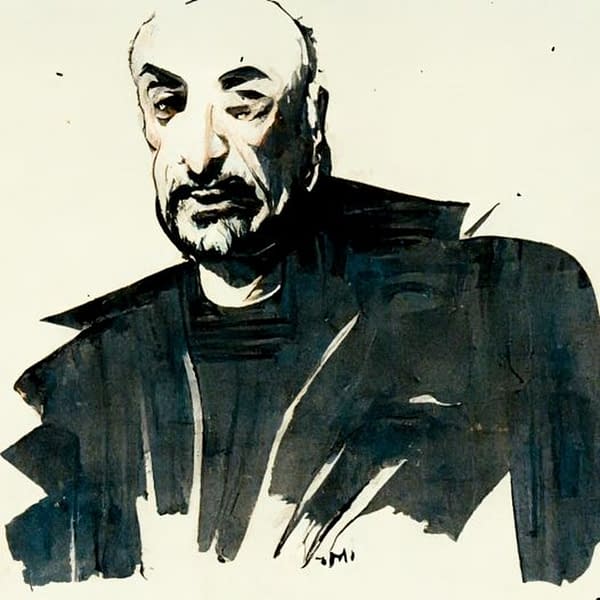
And now not only just superheroes, but DC Comics has Batman or Batman-related comics making up an increasingly sizeable chunk of their publication. Dan DiDio elaborates, "I tell everybody straight out, we had a rule: one-third Batman. That's it. Can't have over 30% of your line associated with Batman. You cannot do it. And the reason why is that you can't sit on a two-legged stool for very long. You know, I'm old enough to remember that Batman didn't really break out until the '80s. If you look at Batman between the collapse of the Adam West show until Dark Knight, Batman was just an average book – you know, medium-seller. Somewhere around the #40 seller: still popular, don't get me wrong, but he wasn't a juggernaut. He wasn't the X-Men. He becomes that later on through the skills of the people who execute the product, especially Denny O'Neil just managing that line so smartly. And also that consistency he brought to the books made all the products feel the same, which was important at the time. It felt like you were buying into something the way you bought into the X-Men line. But the reality is that if you over-extend that, and if 50-55% of your line is built on one character, and the next morning everybody wakes up saying, "You know what, I don't want to read that anymore?" Right. You're done. You don't want to be there, you know?"
Read the rest of the interview here… this is only a sliver. Nothing about 5G though, sadly.







